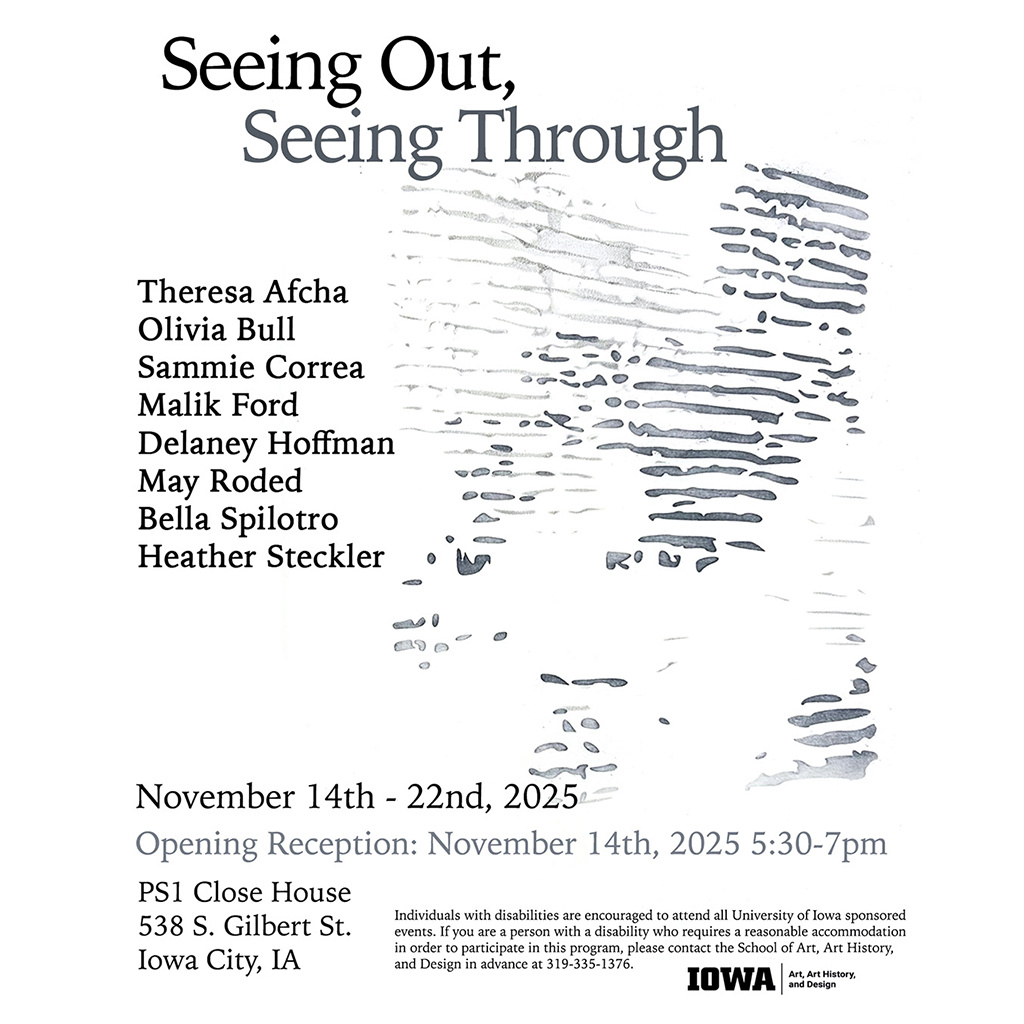
In collaboration with the University of Iowa’s graduate photography seminar, Public Space One is pleased to announce Seeing Out, Seeing Through, a group exhibition at PS1’s Close House location is on view from Nov. 14–22, 2025. Please join us for the opening reception on Friday, Nov. 15 at 538 S. Gilbert from 5:30 to 7 p.m.
Seeing Out, Seeing Through showcases works that skirt the edges of photography, reflecting on magical systems, material transparency, surveillance, and artmaking as a method of time travel. Featuring new works from Theresa Afcha, Olivia Bull, Sammie Correa, Malik Ford, Delaney Hoffman, May Roded, Bella Spilotro, and Heather Steckler, represented media in the exhibition spans from traditional photographic prints to sculptural handmade paper and dangling steel forms.
Presented as the culminating event of the University of Iowa’s Fall Graduate Photo Workshop, Seeing Out, Seeing Through is a collaboratively generated exhibition that offers the public a glimpse into the active research that takes place in the artists’ studios. Selected works by Theresa Afcha and Heather Steckler probe at the way we carry our familial legacies through time by way of unorthodox uses of chamomile tea bags and dimensional collage pieces. May Roded and Bella Spilotro continue this investigation into the domestic through light-based inquiry, as Roded translates carefully tracked shadows to material and Spilotro presents a series of photographs examining the interior. Sammie Correa, Olivia Bull and Delaney Hoffman also access similar spatial concerns through installation elements that directly reference magical traditions across time, space, and culture to tell stories about folk remedies, enchanted grottos, and misinformation. These are complemented by Malik Ford’s new series of images, which examine the highly-surveilled Coralville apartment complex in which he lives, and interrogates what it signals to wake up every day to see a scrap yard through your window.
While the approaches and studio practices of the represented artists are varied, their work is linked by a desire to use their art as a mechanism for deep looking. What does it mean to see all the way through the photograph? To make a window out of something solid? To call back to ancestral modes of toothache cure or to call forward, through the veil, to something that you can’t yet see? While these may seem to be impossible questions, Seeing Out, Seeing Through hopes to offer answers to some of them, while further complicating others.